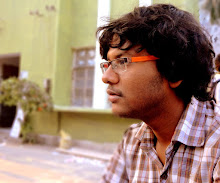This week's question,
rahul and raghav are playing tug-of-war. rahul wins, pulling raghav into the mud puddle. Why did rahul win?
a)rahul exerted a greater force on the rope than raghav exertedon the rope
b) The rope exerted a greater force on raghav than it exerted on rahul.
c) rahul exerted a greater force on the ground than raghav exerted on the ground.
d) All of the above.
live chat on the problem
Answer.
At the start everyone is at rest. For someone to win, there must be an acceleration from rest to initiate motion in one direction. This acceleration need not be large. During the acceleration there must be a net force on each person in the direction of the acceleration.
(a) and (b) are wrong because the rope has relatively small mass, so the tension forces at itsends are nearly the same size (F=ma where m is essentially zero). Certainly any small difference in tension between the two ends is nowhere near great enough to account for the outcome. The rope's mass is very small compared to the masses of rahul and raghav, so even when it accelerates (and sodo they), the net force on the rope, F = ma, is negligibly small compared to the net forces on rahul and raghav. In fact, most of this game involves small accelerations.
(c) is correct. The net force on rahul that allows him to accelerate with respect to the ground is the force of the ground on his feet minus the force the rope exerts on him, theformer being larger. The person with the better shoes, greater coefficient of friction at the ground underfoot, and foot control, wins. raghav also accelerates, because the force ofthe rope on him is larger than the force of the ground on his feet. The player wins who can maintain the largest force between his feet and the ground.
Tuesday, May 31, 2011
Subscribe to:
Post Comments (Atom)

No comments:
Post a Comment